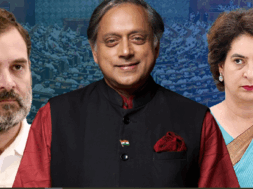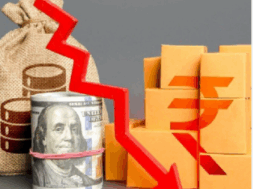
Living standards: India’s per capita income to go up by $2,000 over 5 years
Virendra Pandit
New Delhi: It took India 75 years to achieve a per capita income of USD 2,730 but the next step will be much faster, taking only five years to add USD 2,000 to it, Finance Minister Nirmala Sitharaman said on Friday.
Speaking at the Kautilya Economic Conclave, she expressed confidence in the nation’s economic growth, as per the International Monetary Fund (IMF) projections, forecasting a significant rise in per capita income over the next five years and improved living standards.
Sitharaman highlighted consumption’s pivotal role in the country’s economy, as it makes up over 60 percent of India’s GDP. She underlined the importance of India’s youthful population, with nearly 43 percent under 24 years old, calling it a key factor in driving organic consumption growth, the media reported on Friday.
Praising its financial system, the FM asserted that India now competes on par with global markets, and stressed the importance of ensuring the younger generation is nurtured both mentally and physically to contribute to the country’s economic future. Drawing a comparison to China, she noted how its growth benefitted from a favorable global trade and investment environment.
Her speech conveyed optimism about India’s capacity for sustained economic growth, driven by innovation and a strong financial structure.
Sitharaman remarked that India stands out globally for its economic performance and will continue to do so in the coming years. “We are faring much better than many other nations, even those considered advanced. Today, they are struggling to grow,” she stated.
“We are distinguishing ourselves as the fastest-growing economy in recent years, including this year and for the foreseeable future.”
India’s economy grew by 8.2 percent in 2023-24. The Economic Survey 2023-24, presented in Parliament in July, forecasts growth between 6.5 percent and 7 percent for the current fiscal year, FY25.
“I expect these improvements to continue as the effects of the last ten years of economic and structural reforms manifest more thoroughly in the data in the coming years as the COVID shock fades from the economy,” she said.
About the fiscal health of the economy, Sitharaman said, “The government continues to uphold its commitment to reducing the fiscal deficit. Aided by buoyant revenue generation, restrained revenue expenditure growth, and healthy economic activity, the fiscal deficit would decline further from 5.6 percent of GDP in FY24 (provisional actuals) to 4.9 percent in FY25.”
“The commitment to fiscal discipline will not only help keep bond yields in check but will translate to lower economy-wide borrowing costs,” she said.
The quality of government expenditure continues to improve. Capital expenditure is budgeted to increase by 17.1 percent to Rs. 11.1 lakh crore in FY25, which is 3.4 percent of the GDP. Besides, a larger proportion of fiscal deficit is now accounted for by capital outlays, indicating an increasingly investment-oriented deficit financing.
“The decline in commodity prices has facilitated the lowering of the budgeted allocation for subsidies on fertilizer and fuel. This has contributed to restraining the growth in revenue expenditure, which is estimated to increase by 6.2 percent YoY,” she said.
Stating that the India story will provide a unique opportunity for designing policy, she said the country’s creditable economic performance in the recent decade was underscored by its leapfrogging from the 10th to the 5th largest economy in a matter of five years, sustained high growth rates, and inflation maintained well within the comfortable range.
Highlighting India’s economic rise in the coming decades from the policy perspective, the FM said while it would continue to grow over the decade, the global backdrop is no longer the same. In the early 2000s, emerging markets like China grew relatively more easily because of a favorable global trade and investment climate. This poses a potential challenge (and an opportunity too) for India.
Also, she said, the development journey will have to contend with the twin challenges of dealing with the legacy emissions of the developed world and managing India’s energy transition. The balancing act requires a “whole-of-government” approach and contextualized solutions unique to India. Moreover, India’s energy demand and energy use practices have something to offer the world, such as the food-to-feed balance, she said.














